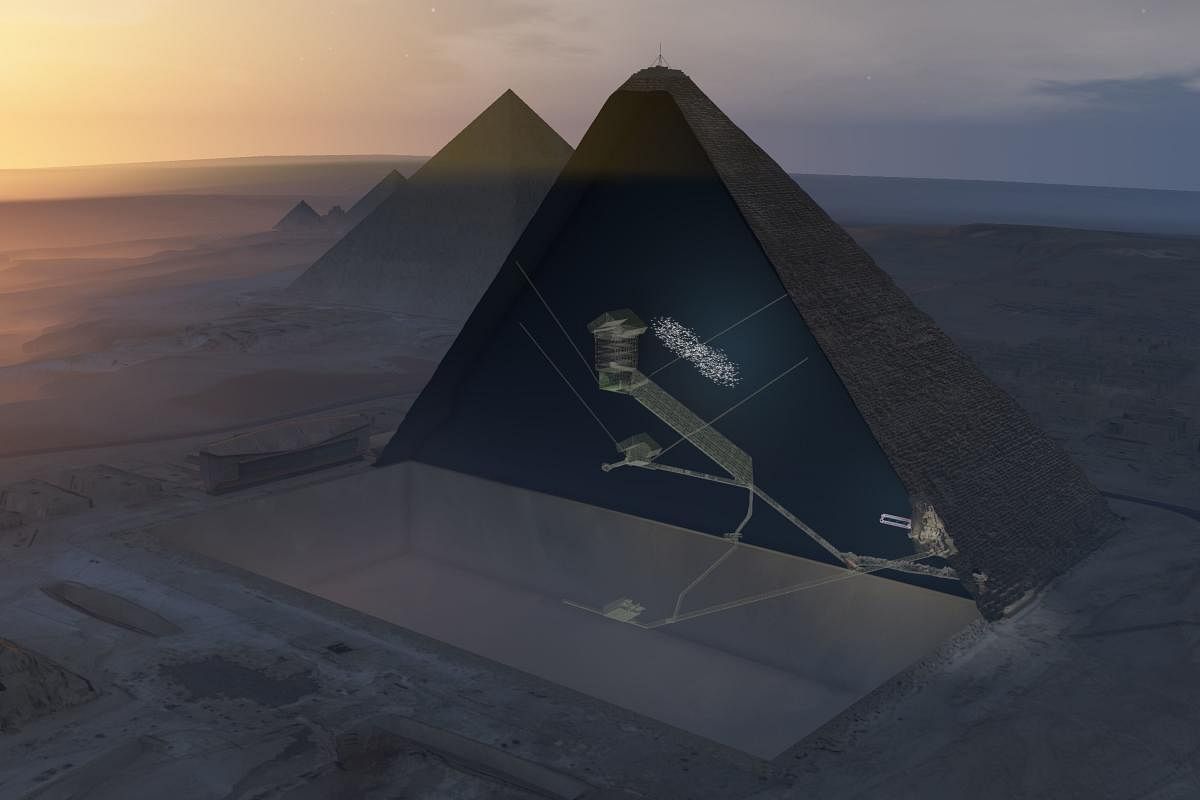
A pyramid is a structure whose outer surfaces are triangular and converge to a single point at the top and has a quadrilateral base. The most well known are the three pyramids in Giza, outside of Cairo. The two bigger ones are the Great Pyramid and the Pyramid of Khafre. They were constructed around 2500 BC. These pyramids also have several secret chambers, which were used to keep bodies of important people like the Pharaoh.
These large chambers were discovered in the 9th century AD and explored extensively by archaeologists in the 19th century. Speculations were rife for decades that the pyramids may have secret chambers built at that time but not known to the later generations.
The Alvarez experiment
Since the presence of such hidden secret chambers would be of interest to historians and archaeologists, the Egyptian government agreed to a proposal of an American particle physicist to look for these chambers. Luis Alvarez, a physicist, proposed to see whether there are secret chambers inside pyramids by looking for particles called muons. When muon was discovered, there was a lot of confusion about the role of these particles in the larger scheme of nature. Today, it is recognised as part of a family of particles called leptons, which along with quarks, are recognised as the fundamental constituents of matter.
The source of muons on earth is the primary cosmic ray particles which impinge on the top of atmosphere from all directions. These particles interact continuously in the atmosphere creating many electrons and muons. Compared to electrons, muons traverse long distances without appreciable scatter.
In the 1950s, it was found that they are able to traverse rocks and were the only particles found inside deep mines. Several scientific groups across the world studied these particles as a function of depth. It was found that the number of muons decreased as the equipment was taken deeper. The number of muons inside a mine varies with the amount of rock above the observation site. If there is more rock, the number of muons is less. This property of muons is what made Alvarez curious to look into the mysteries inside a pyramid.
Alvarez used simple particle detectors like the scintillation counter and spark chamber to do the experiment. The scintillation detector had an area of four square metres and the spark chamber could record the path of particle from all directions. The was done at the Pyramid of Khafre. The detectors were first tested with the known chambers and it showed that the method was feasible.
The experiment was done for several months in 1965. The rate of the cosmic ray events as a function of the direction was plotted and as expected, there was a lot of fluctuation at the corners. The extrapolation of the muon rate clearly showed the distinctive appearance of the pyramid. The detailed study finally concluded that there are no unknown chambers in the pyramid similar to the known ones.
This experiment introduced the method, muon tomography, to the world as a method to study the integrity of ancient structures. This method could be thought of as X-ray imaging the structure.
The latest discovery
Despite being one of the oldest and largest monuments on earth, there is no consensus about how the pyramids were built. To better understand its internal structure, a mission called the ScanPyramids was started. This is a joint programme between Cairo University and the French non-profit HIP Institute, with guidance from the Egyptian Ministry of Antiquities. Scientists from those institutions teamed up with Japanese physicists from Nagoya University and started imaging the pyramid using muons. They tested the method first by locating an already known chamber.
Later, in December 2015, physicists from Nagoya University placed several detectors inside the Queen's chamber of the Great Pyramid. After running for several months, they noticed that there were more muons coming from a particular direction. This pointed to a void in the pyramid.
To check the result, two other teams of physicists also joined the enterprise. Nuclear emulsions used initially had shown the effect but later scintillator detectors confirmed it. All three teams observed a large, unexpected void in the same location above the Grand Gallery, a passage to the royal burial chambers in the Great Pyramid. Their results were reported in the journal Nature on November 2, 2017.
Deccan Herald is on WhatsApp Channels| Join now for Breaking News & Editor's Picks